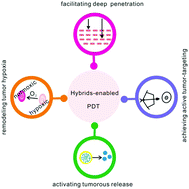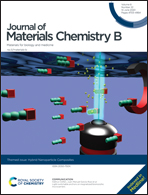Hybrid nanoparticle composites applied to photodynamic therapy: strategies and applications
Abstract
Photodynamic therapy (PDT), as a robust strategy, has long been applied to cancer treatment owing to the meaningful breakthroughs and unique advantages, including ignorable invasiveness and spatio-temporal selectivity. Numerous PDT agents, especially hybrid nanoparticle composite (hybrid)-based sensitizers consisting of an organic polymer and inorganic nanoparticles (NPs), feature the synergetic pros of the components, which have unlocked the additional potentials of PDT. Although reviews relating to the applications of hybrids to PDT have been previously reported, most of them only focus on the designs of smart hybrids integrating multimodal imaging-guided multiple treatment modalities. Traditional PDT treatment has several limitations, such as inadequate PDT agents accumulating in cancer tissues, inferior PDT effect due to the devastating cancer hypoxia environment, relevant systemic toxicity in non-intelligent stimulation response treatment systems, and serious dependence of PDT on external light sources. Many strategies have been developed for overcoming these limitations, including improvement of cancer-homing ability by introducing active targeting groups, remodeling of the cancer hypoxia environment through oxygen regulators, intratumor release of ROS through activatable molecules, and replacement of laser light by X-rays or self-luminescence. This review aims to summarize the most recent advances in designing hybrids for improving the therapeutic efficacy of PDT.

- This article is part of the themed collection: Hybrid Nanoparticle Composites


 Please wait while we load your content...
Please wait while we load your content...